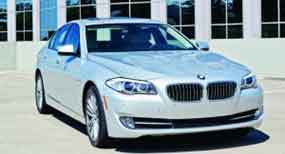Carmakers Drive Innovation with Lightweighting, Powertrains
Auto fact #1: About 50 percent of a modern car’s volume is plastic yet it only accounts for 10 percent of its weight
Auto fact #2: 43-year-old men purchase more cars than anyone else.
Stats like this bring to life the changes taking place in the evolution of the automotive industry, as research and development move at a pace faster than ever.
Two major factors are driving these changes: regulations and market demands. We are all familiar with automobile safety regulations, but may be less familiar with CAFE (corporate average fuel economy) standards. These standards set mileage requirements for an automaker’s fleet. The 2025 target is 54.5 miles per gallon.
Now think of the 40-something guy that represents the largest demographic who are purchasing cars. Is this individual willing to give up performance, e.g., acceleration or leather seats or integrated entertainment systems, so that his new ride meets mileage and safety requirements. Probably not. Innovation is often times driven by necessity and the automotive industry is responding.

In recent years, there has been a major push around lightweighting to help address mileage requirements. Weight reduction is one proven method to improve fuel economy and minimize the impact on performance. This can be achieved through the use of engineering-grade resins that possess physical properties well beyond what the average consumer thinks is possible.
Alternative power sources to the internal combustion engine is another path that can be taken, or in conjunction with lightweighting. This involves looking at electric, hybrid or fuel cell technology. All of these newer power sources have drawbacks such as range limitations that some of the market may not be ready, but continued innovation will make them more attractive in the near future.
Another layer of complexity is the changing demographic. As 78 million baby boomers age, their use and need of cars is changing. Will 69 million Gen X’ers have the same needs? Most likely not. Additional factors like urbanization trends are also affecting the evolution of the automotive markets; as more people move toward major cities, their desire and need for cars may be reduced while the suburban rings surrounding the cities will likely drive future sales.
Recently, Plastics News published an interesting article titled, “How BMW put its 7 Series on a diet,” which discussed how regulations and market demands are driving innovation. Read it here.
And if you are an automotive engineer or designing developing our future cars, an understanding of nontraditional materials and rapid manufacturing processes will continue to be a key to your success.
Sources: Plastics News; SPI Magazine (Fall 2015)